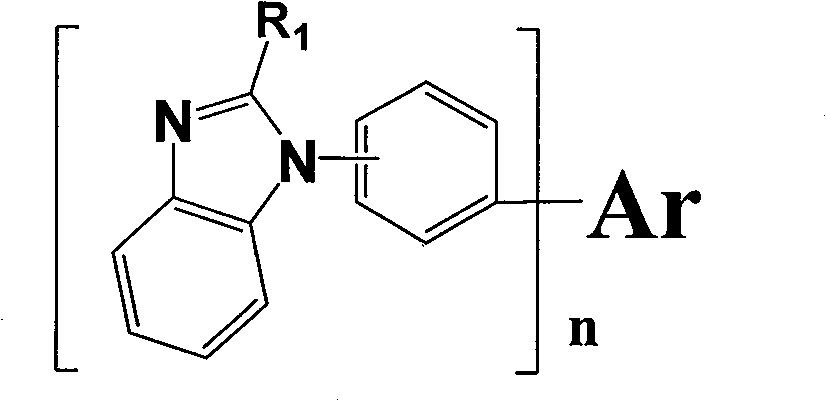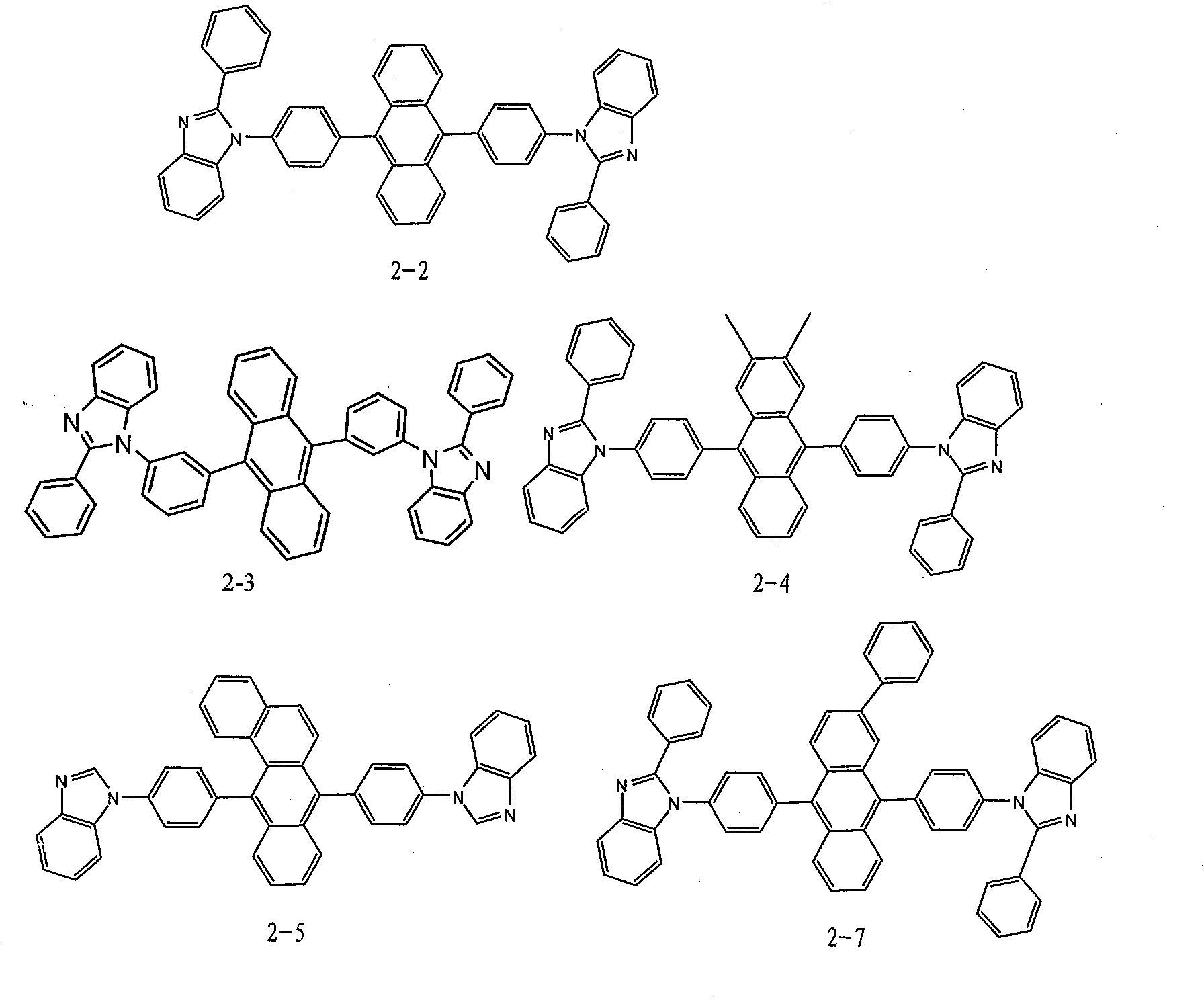Organic material and application thereof in organic electroluminescence devices
An organic material and luminescent technology, applied in the fields of electric solid-state devices, electrical components, organic chemistry, etc., can solve the problems of reducing the cost of OLEDs, increasing the complexity and disadvantages of the device manufacturing process, and achieving the effect of high electron mobility
- Summary
- Abstract
- Description
- Claims
- Application Information
AI Technical Summary
Problems solved by technology
Method used
Image
Examples
Embodiment 1
[0032] The synthesis of embodiment 1 compound 2-2
[0033] (1) The first step reaction
[0034]
[0035] A 500 ml three-neck flask was equipped with a magnetic stirrer, and after argon replacement, 13.58 g of 4-bromoiodobenzene (purity 99%, 0.048 mol) and THF 200 ml were added in sequence according to the above amounts. BuLi 19ml (concentration 2.5M, 0.0475mol) was added dropwise at -83°C, and anthraquinone 4.16g (purity 99%, 0.02mol) was immediately added. After the addition, the temperature was naturally raised to room temperature, and the solution was bright yellow. Add 200ml of water for hydrolysis, collect the organic layer and wash it with dihalomethane, combine the organic layers, evaporate the solvent to dryness, add 300ml of acetic acid, 18g of KI and 18g of sodium hypophosphite, reflux, react for 1 hour, and cool down , filtered, and rinsed with water to obtain 9.29 g of a yellow product with a purity of 94.5% and a yield of 90%.
[0036] (2) The second step re...
Embodiment 2
[0040] The synthesis of embodiment 2 compound 2-4
[0041] Using 2,3-dimethyl-9,10-anthraquinone, 4-bromoiodobenzene, and benzimidazole as raw materials, compound 2-4 was obtained through the same steps as in Example 5.
[0042] Product MS (m / e): 590.71.; Elemental analysis (C 42 h 30 N 4 ): theoretical value C: 85.4%, H: 5.12%, N: 9.48%; measured value C: 85.35%, H: 5.01%, N: 9.64%.
Embodiment 3
[0043] The synthesis of embodiment 3 compound 2-5
[0044] Using 9,10-benzoanthraquinone, 4-bromoiodobenzene, and benzimidazole as raw materials, compound 2-5 was obtained through the same steps as in Example 5.
[0045] Product MS (m / e): 612.72.; Elemental analysis (C 44 h 28 N 4 ): theoretical value C: 86.25%, H: 4.61%, N: 9.14%; measured value C: 86.35%, H: 4.55%, N: 9.1%.
PUM
 Login to View More
Login to View More Abstract
Description
Claims
Application Information
 Login to View More
Login to View More - R&D
- Intellectual Property
- Life Sciences
- Materials
- Tech Scout
- Unparalleled Data Quality
- Higher Quality Content
- 60% Fewer Hallucinations
Browse by: Latest US Patents, China's latest patents, Technical Efficacy Thesaurus, Application Domain, Technology Topic, Popular Technical Reports.
© 2025 PatSnap. All rights reserved.Legal|Privacy policy|Modern Slavery Act Transparency Statement|Sitemap|About US| Contact US: help@patsnap.com



